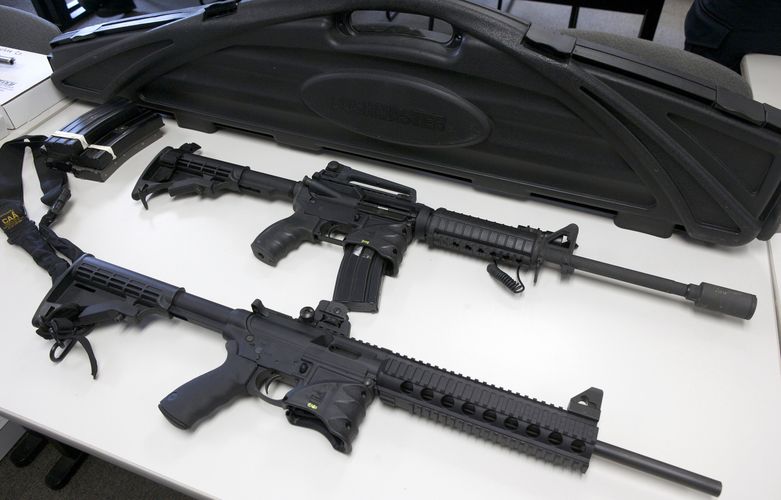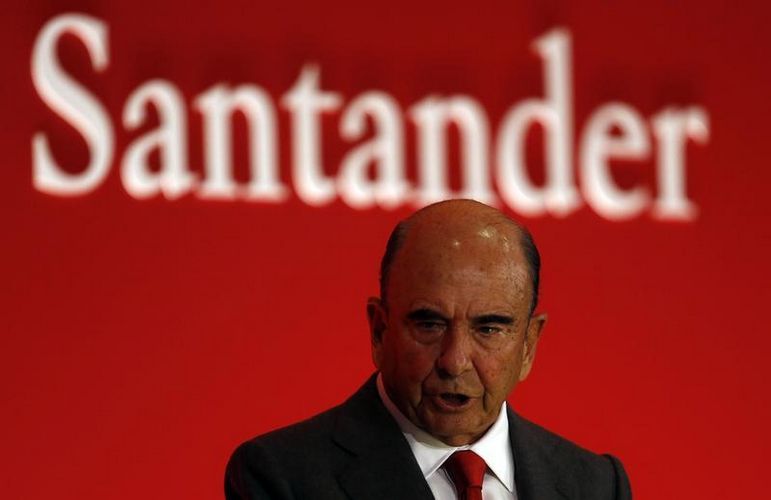IFR: What is the outlook for Brazilian capital markets, both local and international, given the current volatility backdrop?
Denise Moura (Banco Bradesco BBI): We have emerged from a period of heavy insecurity on the investor side. Thinking of demand and trying to see what would happen internationally, investors restrained themselves from buying local paper. Now, we can already begin to see interest returning. So I believe that the worst for the capital markets and local debt market has passed. I don’t know what your colleagues have to say about this internationally but from a local point of view, I believe the worst of it has passed. We are already starting to see investors looking for paper again.
Investors were also overloaded with paper in their portfolios. That also gets in the way of demand but now there is some slack on both sides because the fear of a spread widening overseas provoking the same reaction here was fairly established. There has been a widening in spreads here.
David Jana (Calyon): I see a very positive side to this all. Firstly, because the root of the volatility came from the market itself. It was not from government intervention or scandals. It was purely a decision of investors in a specific segment in a developed market. So it is positive that this crisis is unrelated to anything at the emerging markets as it used to be in the past.
Luis Largman (Cyrela): I agree with David. Another thing that is very positive is that today we are living in an interesting moment because the equity and debt markets have decoupled. You have two very different movements. Naturally, one of them is going to converge and we hope for the reasons that you put forward that the debt market improves because the problem was not a crisis provoked by the governments, nor by scandals nor by anything structural.
What we have noticed from investors is that they have a large appetite and we are living in a very special moment in Brazil on the eve of an upgrade to investment grade and just before Brazil reaches US$200bn in its international reserves. For the first time, we are beginning to see investors are also sufficiently interested in buying Real issues.
Luis Berlfein (BNP Paribas): Picking up on Real issuance, I believe there is much more appetite today for private-sector paper than there is for the sovereign. I believe all of the big investors, especially those abroad, are looking with more interest at private-sector paper. Firstly, I do not believe there was a crisis. I believe the market stopped. It was coincidental with summer abroad. The market feels that there was an interruption but it is back and levels are very good.
Glenn Peebles (Dresdner): I wouldn’t say it was a crisis, but a liquidity issue. It had nothing to do with Brazil. It had to do, in one sense, with a question of ratings, how they evaluate certain outbound vehicles. It didn’t have anything to do with us. So the good thing is people don’t have to panic. We’re past that, unless there are some really large cadavers out there that no one has seen yet.
Now it’s a question of re-pricing levels. The local market is pretty attractive here so investors are saying, “OK, what price? It’s not the price you gave. I don’t have any liquidity problems but you don’t have the options you had before.” I think we’re kind of at that point. The outlook going forward is very positive. I think we’ll come out of this crisis, or non-crisis. The rest of this year and the year to come are going to be pretty promising, quite frankly.
IFR: Talking about pricing, what is going to give? What can issuers do? How much of a repricing is acceptable to an issuer? When will this market come back?
Charles Achoa (Credit Suisse): I disagree with Glenn on the issue of repricing. I believe it is going to happen but it will not end up being too distant from where we were at the beginning of this year. Proof of that is Odebrecht’s issue [in early October]. In three days, the issuer generated a book worth US$1.25bn, which allowed the issuer to issue significantly below the first rumours heard in the market. We came out with price talk of 8% and priced at 7.75%. There is a lot of liquidity in the market and there are no skeletons in the market that can bring an end to this liquidity.
Peebles: I think you’re right. We appear to be coming back from a period of illiquidity. The better quality credits are coming back to market first – they are easier for investors to get involved with first. We at Dresdner Kleinwort are a bit more focused on lower rated credits. So, for us, for these lower rated credits, it will take a little bit longer for investors to get comfortable again with the higher yielding credits, as investors are a little pickier. So I don’t think it’s really a difference of opinion; it’s a difference of focus.
IFR: And in terms of re-pricing, what sort of spreads are we looking at locally and internationally in terms of how much wider can we expect on US dollar bonds and debentures at this moment?
Jana: I believe the market will come back very quickly and return to levels last seen in the first half for two reasons. First, there is relatively little debt for large corporates and also because of some reallocation of resources from more developed countries to countries such as Brazil, which offers growth opportunities and, still, low leverage.
It is basically that. The cost of money on average has increased 10bp–15bp in the short term, 30bp–50bp in the medium to long term for large borrowers, which is not so much and I believe the return to pre-crisis levels could be fast.
I believe the important question here is the debate about how the market returns to pre-volatility levels last seen at the end of the first-half. At the end of the first-half we started to see new names coming to market at levels that no one could have imagined possible and the question is, when will we see that again?
I believe the market could return to such levels within the next few months and there is the possibility that it could return with such force that it gains new depths with more companies coming to market than ever before and solid pricing levels. I believe these two factors could come quickly.
Moura: I just wanted to add to that. In Brazil, we do not see so much liquidity, just because the funds buy to hold. This level of liquidity that we see internationally is not true here. Here out situation is more specific, spreads widened a bit but not much and I believe that we had already reached as tight as we could go in terms of spread for the big companies. Now the bigger companies are having a little more difficulty to raise money or are having to pay much more.
Berlfein: I agree with Denise about the local market – just because there are some old mandates that are coming to the local market now with an execution level that is going to be difficult. Mandates awarded post-volatility are already coming at another level. Price bargaining favours the buyer.
It is a bit like this on the international market. I believe there was a shift in the bargaining price before the liquidity crisis when rates were aggressive. I believe Brazil suffered very little or almost nothing in terms of spreads before and after.
For example, Brazil is nearing Russian CDS levels and Russia is investment grade. When dealing with issuance – and I am talking more about the private-sector – the feeling we get is that investors are starting to say, “I saw that deal in such a place, same rating, same sector, paying a little more”. Brazil suffered so much less than Mexico that in our view we start to confront the idea that our curve is not going to improve just because it is has crossed the other curve. This is the point that prompts an investor to ask for a little more time.
Largman: Firstly, we cannot forget that the level of profit in Brazil has grown a lot these last years. Secondly, the level of Brazilian corporate leverage versus the rest of the world is much smaller. The third point – and from the view of an issuer – bank credit in Brazil is harsh. Fourth point, we have a sovereign risk curve and a local futures interest rate curve on the BM&F with relatively good liquidity. For an issuer, if it doesn’t return to capital markets, the alternative is borrowing from a bank. The issuer will have to return. That is my view. I agree that the trend is for a speedy return to spread tights.
Carlos Fadigas (Braksem): For an issue in local currency, it is not so much the cost – though, the cost is important too – but the tenor that is a problem. Since 2002 we have seen a massive increase in tenors on the international market. Two to three years ago, it was 30 years. When we try to do this in local currency the only alternative is the BNDES. It is important for petrochemicals to have a long tenor but as you put together your amortisations programme, you can only count on the dollar market to extend beyond seven years.
This is something I hope will change as the local market matures and with an increase in international investor appetite in Real-denominated issues which are able to bring a little more efficiency. Then you can have a balance sheet in dollars and Reais.
Peebles: It has already improved a lot. Seven years or more represents strong progress here.
Berlfein: I agree with you.
Peebles: I think a lot of changes are going to have to happen – long tenors in Reais, effective arbitrage of both curves with internal and external investors, local instruments becoming euroclearable and withholding tax on interest payments being at the very least greatly reduced. Part of our job is to try to overcome these obstacles but we are going to continue with the current scenario as long as debentures cannot be traded overseas and there is a withholding tax.
Diniz (Cosan): I agree. If there is anyone used to buying duration, it is the international investor who buys much more than the local. The local investor has already bought a lot of five and seven-year paper. A five year is common locally. An international investor is going to have more appetite if you bring him to the local market but the market is somewhat blocked without an exemption.
Antonio Neto (SG): I agree with all of Carlos’s views. Basically, people do not even consider an operation in Reais. It barely exists but when it does, the cost and the tenor are totally unattractive. Though it has improved.
Paulo Valle (Brazilian Treasury): Thanks to the last few years of Treasury policy, we have today a well defined inflation-linked curve. And we have demand. We have two auctions a month and there is stable demand from pension funds. But I recognise it is difficult for corporates to access CPI-linked paper. The BNDES is trying to ferment this debenture market, creating standard structures and trying to increase liquidity but companies have limitations when accessing the long end.
So what is missing? There is the foreign investor factor without a doubt today. Clearly, there is a difference between the private-sector and public-sector bond and investors have a larger incentive to add exposure to public bonds, given its standardisation and liquidity.
Peebles: For me it is liquidity. Overseas you have the retail factor. Here you don’t get this. If you look to see if the situation has improved here you will find the swapping of securities is trivial. There is no market-maker but you need a bank that can play a good role in market-making but if there is no retail buyer interested in this paper there is not going to be any trading.
Moura: You are absolutely right. I would just add the following – we have tried to come to market with CPI-linked deals a number of times. We have even asked companies if they wanted to raise such paper but demand never goes beyond R$200m or R$300m when there is R$300m on offer. People will start to buy CPI-linked offers but the truth is that there is no demand. Pension funds complain but they don’t buy. So it becomes a vicious cycle.
Plus, there is hardly any retail presence out there. I believe the BNDES is playing an important role in bringing retail to this market. But the truth is that every time that you try to gauge a deal for a company like Cyrela, Braskem or Cosan, there is no interest in deals R$200m in size. Retail wants big-sized transactions.
Instead, we bring a deal with a CDI and CPI-linked tranche. If it is a R$200m transaction, it’s great. But it becomes difficult to distribute if the size is larger.
Jose Franco Morais (Brazilian Treasury): We noticed a significant difference between 2006 and 2007. In 2006 when we exempted foreign investors from the withholding tax, there was flight during the first bout of volatility. Yields for inflation-linked bonds rose back to 9.00% from 7.00% within a few days. This year it is different. During volatility, pension funds went to the papers. I have various reports saying the sovereign was too tight. The rate was at 6.00%, it moved to 7.00% and investors saw an opportunity to buy the paper.
Moura: We have started to see that the index has a larger weight in the market. This is going to prompt the market to buy more. It is like taking part in the Ibovespa index or not. It is the difference between heaven and hell when measuring a paper’s liquidity.
There is another important issue that we are yet to comment on: the fact that the market understands at what level the rate should settle into. Normally, when we have a drop in local rates a company wants to make the most of this fall and with reason the investor too wants to make the best of this reduction.
Then we have a bit of a problem when we talk about price or a percentage of CDI. They are all papers that have difficulty in creating a balance between what the issuer and investor want. When the rate settles – and we believe that that moment is very close – the market will return to buying.
Neto: When talking about liquidity we can clearly see the issuer’s role. It is difficult to blame anyone other than the Brazilian issuer. You rarely see deals like CVRD’s debenture last year. CVRD is one of the largest mining companies in the world with an excellent credit profile and when it came to the debentures market it could have innovated and asked its coordinators and leads to create market makers.
This issue of market maker is very much linked to the value that the company sees in this role of market maker. What we have seen in Brazilian issuers accessing the debentures market is a tendency to treat a debenture as a credit line without the [financial operations and industrial products tax] IOF. It’s more like budget control: “we would like such a credit line at such a price”. Afterward, you go and reprice it. “I will buy it back and issue again.” Then you never realise like you do overseas just how much your paper is trading in secondary until you stop to monitor it and see if it is time to buy it back or not.
We see a number of big issuers that could go up to the banks and say “I want you to give me a limit on so many millions to be market maker.” But this is reality far removed from Brazil.
Peebles: There are two things here, there is the debenture market and then there are the other markets. The debentures market is a market based on private placements. People come and go but they hold the paper. Each operation is done to suit the client. Investors are few. To have a good market you need to have a secondary bond market. Today, anyone can get 11% and pick their index. Only until you have to sweat a little to get some more margin will there be interest from retail. There should be standard structures and prices should be fixed. To arrive at such a solution, the move would be to allow the debentures market to become easier for international investors to access. But issuers will have to price above a fixed spread because that is the way international investors want their transactions.
At the end of it, it is best for the investor. Interest rates are falling and if you are gaining a fixed percentage it is even better. The way forward – for me at least – is to facilitate the debentures market in the short term. In the way that interest rates keep falling, the spread starts becoming more relevant and through this we will start to see retail making its big entry into the market.
Moura: It is interesting when commenting about the part of debenture taxation. ANBID [National Association of Investment Banks] worked with the internal revenue service and the finance ministry and came up with a proposal, a new formula geared toward stimulating debenture issuance. This proposal has already been put forward. There is also a proposition that volume traded by the market maker does not impact BIS commitments. These are some of the proposals ANBID is working on to help lift liquidity in the debentures market.
I also wanted to say something important about debentures. I brought some numbers with me that we can discuss. Last year – excluding bought leasing transactions – the market was made up of R$22.5bn worth of plain vanillas. This is ridiculous. This year it is estimated to be R$11bn.
There are a number of reasons behind this but one of them that we are unable to measure is the impact of CCB loans. Many people are packaging, lending and distributing the CCB as if it were a debenture. When people think of the capital market, they also think of this new instrument – it is not new to banks but new to the market as an investment.
Berlfein: I sit on the subcommittee for liquidity and know about this. These points are very important to the local market. If they extend the tax exemption on public sector bonds to corporate bonds for overseas funds and if they reduce an 11% BIS capital requirement on trading positions in debentures, we will see an increase in liquidity and this will prompt various banks to set up trading portfolios of such securities. Another very worrying issue is the CCB.
The debenture is a registered security on the CVM and depends on the CVM for approval and disclosure even if there is auto-regulation brought in by ANBID. The procedures are very similar. But it can take two months or even more to get CVM approval. With the CCB, it is much faster. It is not a security and in theory is not for public distribution. And this market is gaining ground. What is the basic difference? The IOF tax. And agility. Most times the CCB is done far more quickly.
Moura: Long term – 10 years – and the IOF dies.
Jana: There should be a sophisticated loan market, but instead we have a limited debenture market today where people in some cases use them for tax reasons. People should offer loans and debentures together and let clients make their choice.
Diniz: From a certain point of view, the exporting companies inhibit the local capital market’s development, raising that famous saying: “Once bitten twice shy”. Regardless of the index used, especially for companies with outsourcing, capital and long-term projects in dollars, you always end up running the foreign exchange risk. Whether you want it or not with more than 60% of our revenue in dollars, you cannot be sure of passing any local index onto the price of your products and matching the cost of the index to the price adjustment in dollar of the products.
In our case – similar to other companies – there is something more specific. For the first time we are really able to consider the local capital markets in Brazil as a way to fund energy co-generation projects. This is because these projects are usually born by winning an energy auction organised by the government, implying the right to sell energy in the future through a fixed price mechanism adjusted by inflation.
Therefore, by accessing the local capital markets, one does not run any mismatch risk, since the top line of the project will be in Reais. Although this is a very specific situation, it will contribute sizeable deals to the local capital markets. On the other hand, if you use a long-term instrument in the international financial market and swap it to Reais, chances are that the mismatch risk will be out there when the swap has to be renewed and, consequently, you eventually end up compromising the return of the whole project. All in all, considering that the majority of our revenues are dollar denominated, the local capital market ends up being less important.
Berlfein: Going back to the standardisation of instruments, a major incentive would still be the use of NTN-F structures [Brazil’s public-sector fixed-rate bond] in corporate issuance. I think we should work with issuers to come up with similar structures to the NTN-F. It makes sense to create a standard model as there is liquidity in government paper up to 2012 and 2017. The NTN-F can serve as an intermediary until we create a pure fixed-rate curve on the local market with some duration.
Morais: Today, investors are ready to take on fixed-rate risk in debentures.
Berlfein: If you have a top quality company that comes with a NTN-F and with significant volume – a move that would give secondary liquidity a chance to take off – you would have an initial stepping board for other companies to follow.
Moura: You asked if there would be demand. Very good companies such as the multinationals can come. If there is a relaxation in the rules then a lot more companies can come to market. If not, the most they can do is commercial paper or a FIDC [ABS fund] which today is problematic for companies. If you can imagine a carmaker – for it, a fixed-rate coupon would be very good because it sells at fixed levels. If it can raise money without being restricted and forced to register with the CVM, it will come to market though a private placement. We are talking about a market made up of institutional investors. If the CVM loosens such restrictions, then we will be able to create an interesting local market based on a fixed-rate curve.
Berlfein: Adding to this line of thought, the folk at ANBID prepared a document about private placements for the CVM. We put forward that all issues – whether they be private or not – should be public because they are registered at the CVM. We are suggesting to the CVM a process on private placements.
Peebles: These CCBs are leaving the market somewhat bare in terms of activity after you take out the impact from leasing companies. And everybody knows that they are a specific case. A good part of what is left over is just bank loans disguised as if they were the real thing. I expect this to be the trend. Before the CVM gives approval to such multinational companies, they are first going to fall prey to the charm of a CCB.
Moura: The CVM should have been invited to take part in this discussion too.




